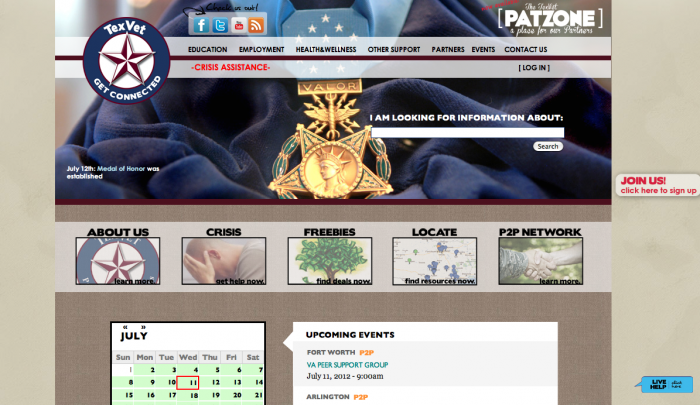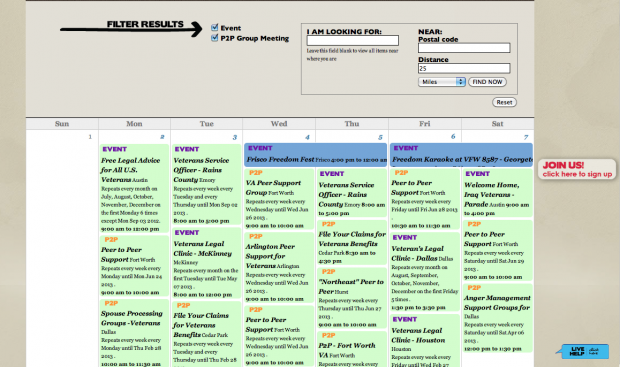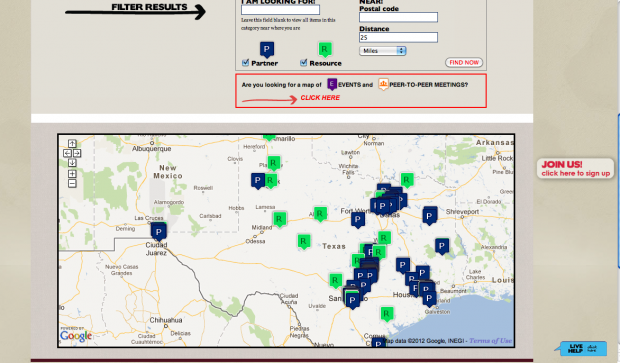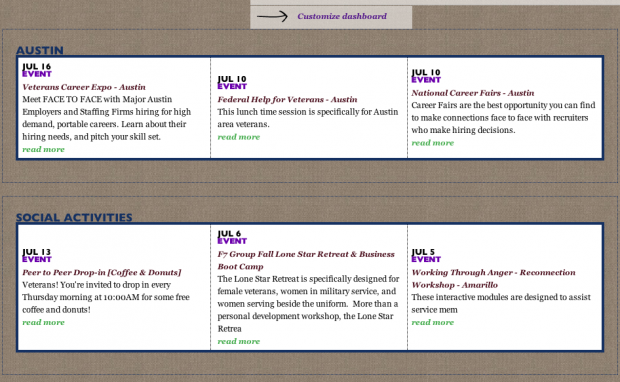 Support for Drupal 7 is ending on 5 January 2025—it’s time to migrate to Drupal 10! Learn about the many benefits of Drupal 10 and find migration tools in our resource center.
Support for Drupal 7 is ending on 5 January 2025—it’s time to migrate to Drupal 10! Learn about the many benefits of Drupal 10 and find migration tools in our resource center.TexVet is an organization that assists Texas veterans and military members in finding resources in their local communities. We are unique in that we provide information about local nonprofits, not just state and national resources. TexVet also serves as the hub for a statewide peer-to-peer network. The main concept behind this network is our belief that the best way to overcome the pains and trauma of war is to talk with others who have been there. Through the peer-to-peer network, veterans go through a week of intensive training and are then tasked with going out into their local communities to facilitate a group meeting of veterans. The network ensures that no veteran is without a shoulder to lean on.
Using the Drupal platform, we are able to add verified content to our database for inclusion on an interactive map, for veterans to literally see what's available around them. This is something that has never been done in the veteran or military community in the United States. We took open source technology and used it to better a community.
Furthermore, we used Drupal's multi-site capability to create a subsequent website called the PATZone, which allows statewide peer-to-peer facilitators to hold discussions on a forum-based back end. The PATZone also offers the ability to download and upload data and statistical information.

We needed a robust platform that had a strong capability for high user interaction. We looked at other open source CMS technology, but those frameworks were not great for sites with constantly changing content. Drupal also has the strongest community of contributors, making it easy to patch things quickly instead of having to wait for another version to come out.
We had three major goals:
1. Create an easy-to-navigate website, complete with a visual map where Iraq and Vietnam veterans alike can find resources exactly where they are -- whether they live in a large metropolitan area or a small rural community.
2. Give end users the ability to pick and choose the content that is important, through exposed Views filters and a customizable user dashboard.
3. Take the plethora of resources that are available in our database and make them filterable down to exactly what the end user is looking to find.
Technical specifications
While we realize that oftentimes the OpenLayers module is chosen over the GMap module, we chose to go with the GMap module because it was much easier to set up. With the GMap module, all you basically have to do is select it as a View type in the View options.
The Views module is an absolute necessity for customizing what the end user sees, and really even how the user interacts with your site.
Our website has the most comprehensive events calendar in the state of Texas. The Calendar module is so simple to use that we didn't have to contemplate whether to use it or not. We used the Calendar module in conjunction with the Date module, which allows us to set monthly repeating events ... such a time saver!
This was the first time any of us had worked with Drupal. Since making our decision to use Drupal, we have not only become active members of the Drupal community, but we have become loud advocates for its use as well. Additionally, we have attended DrupalCamps and Austin-area Drupal meetups. Since launching our Drupal 7 site in June 2012, we have proposed a panel topic on how open source technology can change a community (using our Drupal-based website as a main focus) for South By Southwest 2013.


